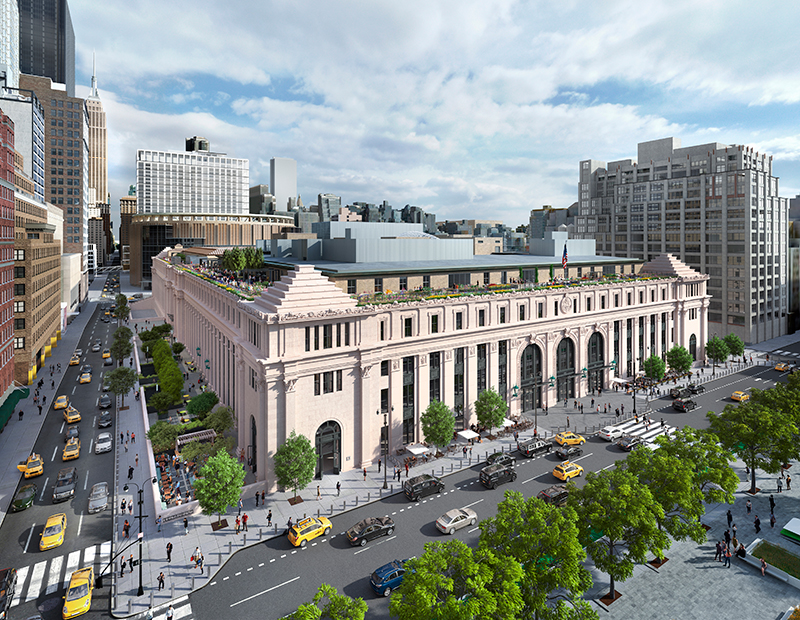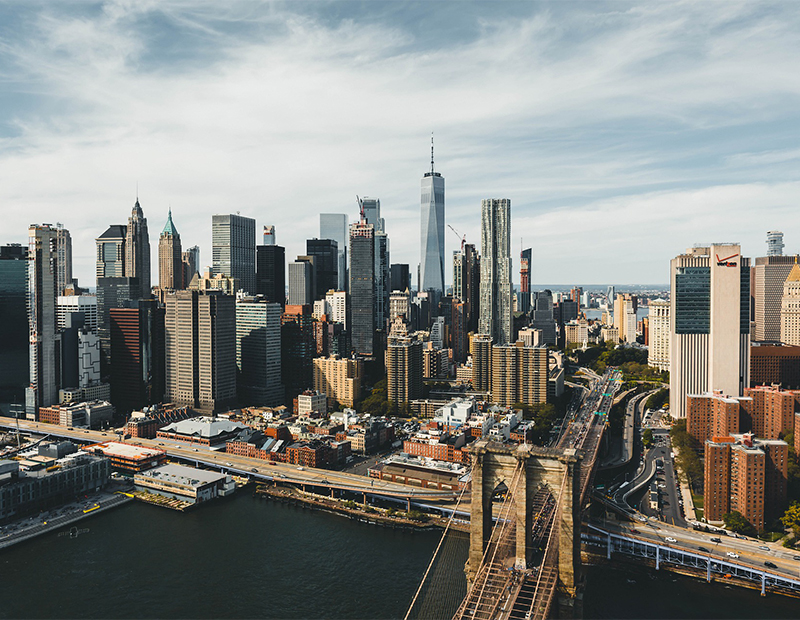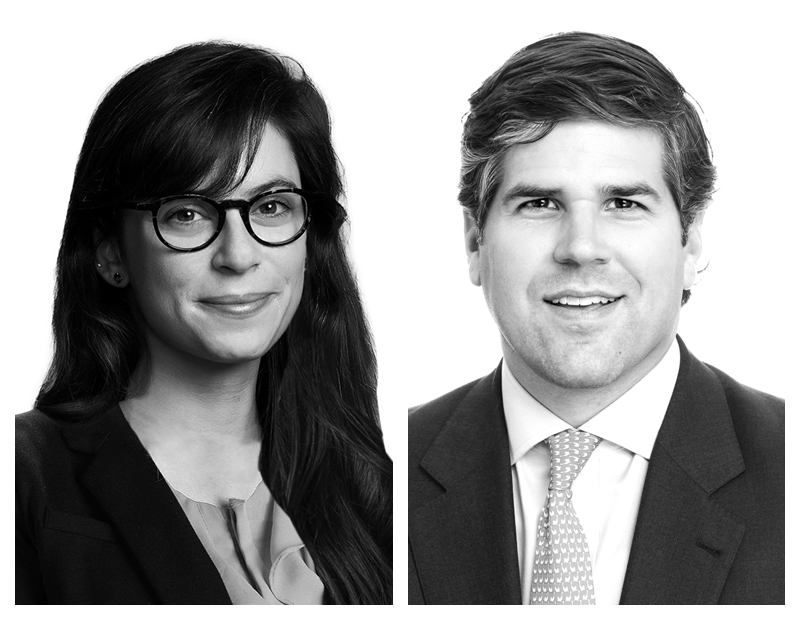NYC’s Office Landscape Is Changing Fast. What’s Next?
A deep dive into the powerful currents shaping the future of the nation's largest office market.
A year after the pandemic shook up New York City’s commercial real estate market, conditions remain extraordinarily challenging. It is no secret that the city’s office leasing and investment sales experienced tremendous strain.
“Unfortunately, due to the city’s density and dependence on mass transit, we won’t see meaningful improvement until there is a return to health, and people feel comfortable coming back to the office,” Ruth Colp-Haber, President & CEO of Wharton Property Advisors, told Commercial Property Executive.
Despite this sobering forecast, there appears to be light at the end of the COVID-19 tunnel. The prospects for a return to the office by a growing number of workers this year are reflected in a sense of renewed broker activity, according to Grant Greenspan, principal at Kaufman Organization. That said, the return to the office will be slow and cautious, even after large-scale vaccination.
“We’re hearing from tenants and decision-makers that as soon as the vaccine becomes readily available, people will be more prone to returning. I also believe at some point vaccines will be mandatory for office workers,” he added.
READ ALSO: New York City’s Recovery: Can History Help Estimate the Timeline?

Ruth Colp-Haber, President & CEO, Wharton Property Advisors. Image courtesy of Wharton Property Advisors
While the vaccine distribution is meant to ease some of the stress on the current commercial landscape, Colp-Haber thinks it is merely a threshold minimum requirement for the return to the office. COVID-19 has irreversibly changed the way we do business and how people interact with the place they work in.
“We have entered a new real estate world and each tenant’s approach is sui generis, and one size does not fit everyone. Landlords ignore that sea change at their peril. It is important to stress that most tenants have effectively functioned without an office for a year. As a result, they have learned to cope without an office and if they can save money with a smaller office, many will do so,” she continued.
JLL Senior Director of Research for the New York/Tri-State Region Phoebe Holtzman and Managing Director Clark Finney agree that, as the pandemic progressed, the high-density offices lost their shine, while personal workspaces and collaborative meeting and social spaces were increasingly more appreciated.
According to a JLL survey, 74 percent of people want to be back in the office either full-time or in a hybrid model. “The fatigue of working from home has been building since the onset of the pandemic, but the desire for flexibility is here to stay,” JLL experts noted.
Changing landlord-tenant dynamics
Last March, COVID-19 put business activity on hold across the state. Leasing activity was tepid throughout 2020, with most signed leases coming from the financial and life sciences sectors—with the latter experiencing a boom thanks to the race for a vaccine.
The health crisis paved the way for a different approach in landlord-tenant negotiations, influenced by work-from-home policies and economic uncertainty.
Tenants became bolder, express their needs and to avoid being pushed into long-term leases on unfavorable terms, while continuing to work out their own business plans and deciding on what to do with their own space.
According to Colp-Haber, apart from short-term extensions, “there are basically no negotiations except asking for free rent and lease concessions for those who are experiencing difficulty in paying the rent.” Condé Nast’s refusal to pay a $2.4 million monthly lease at the World Trade Center reflects that trend. “Tenants have all the bargaining leverage now,” she added.
Holtzman and Finney also highlight tenants’ heightened focus on flexibility. Thanks to New York City’s increasingly competitive market environment, tenants push much harder for lease options that allow for both growth and contraction, but also lease-term flexibility. Greenspan anticipates that the market will soon rebound and as leasing velocity increases, landlords will become more resilient in offering concession packages. He also thinks that certain submarkets are going to bounce back quicker or more aggressively than others, with the Flatiron, Union Square and NoMad districts as leading indicators in market recovery.
READ ALSO: Google Commits $250M to New York Expansion
JLL data shows that sublease vacancy has nearly doubled since the first quarter of 2020, with 11.6 million square feet of sublease space added to the market after the onset of COVID-19—but levels have not yet reached those of the past two recessions. Submarkets with the highest sublease vacancy, such as Midtown South, are experiencing greater downward pressure on direct rents and more competition with direct availabilities.
These major changes in tenant attitudes reveal a new reality: New York City is now a tenant’s market. According to Colp-Haber, “tenants have options for the first time and landlords will need to work harder for their business.” That can be achieved through incentives like significantly lower rents, more free rent, expanded tenant improvement budgets, shorter lease terms, cancellation rights, and enhanced pandemic protection—”not with hand sanitizer, signage and social distancing alone.”
While occupants are reassessing their space needs amid uncertainty about the future of work, tech tenants continue to act as engines of demand in office leasing. The flight-to-quality trend was amplified by the pandemic, as tenants and landlords alike started to focus their workplace strategy mainly on employee health and productivity.

Rendering of the Farley Building in New York City, which Vornado Realty Trust and its partners are redeveloping into a creative office hub, with retail space and a new train hall. Rendering courtesy of Vornado
According to Holtzman and Finney, the Class A market segment constituted 81 percent of total annual activity, and post-COVID-19 leasing trends pointed to resiliency within new construction and high-quality market segments.
The duo expects new office stock to continue to command premium asking rates, for health and wellness reasons, as well as to help tenants attract talent. Examples include Facebook’s 730,000-square-foot space at the Farley Building and TikTok’s new lease in Times Square.
A different “New York state of mind”
A Cushman & Wakefield study noted recently that New York City’s office space inventory surpasses that of London and San Francisco combined. Considering the diminished demand for office space—at least in the short term—that raises a question. Will the city keep its status as the globe’s corporate headquarters after the pandemic is finally under control?
In order to retain that status, Greenspan contends, a change in the local government’s philosophy. “At the forefront, it must focus on creating a business-friendly environment, which must also include public safety.”
The idea of converting vacant commercial buildings into testing sites has won the support of leaders like Gov. Andrew Cuomo and William Rudin, CEO of Rudin Management Co. and chairman of the Real Estate Board of New York. While this measure might provide one temporary solution to rising commercial vacancies, Colp-Haber notes that it won’t solve the problem on its own.
She mentions other viable measures such as tax credits for business rents in affected areas and extended government reimbursement for office rents well beyond the two-month Paycheck Protection Program payments. While Greenspan also supports the usage of vacant spaces for testing sites, he doesn’t think these conversions will have a long-term impact on the market.
Meanwhile, JLL’s Holtzman and Finney are betting on the market’s traditionally strong fundamentals. “While it will take time to work through the recent crisis, vacant space will be absorbed and adapted, and companies will compete to be here, at the center of the energy, creativity and talent that are critical to success.”
There are many unanswered questions about the future of New York City’s commercial landscape—for one, the larger impact of current shifts in the market. Colp-Haber believes flexible space operators will be the first to recover from the industry-wide slump due to their ability to offer cancellable short-term leases. Accordingly, companies that have not yet decided upon how many employees and when to bring them back to the office “will have the opportunity to experiment with what works best for them,” she adds.
Cushman & Wakefield research estimates that office leasing will most likely recover fully by 2025. On a local level, the number of entrepreneurs looking to take advantage of long-term rents at below-market prices is expected to rise, while large corporate chains will enter the market to lock in retail spaces at advantageous rents, Greenspan expects. He believes that the New York City office market will regain its appeal in the next 12 months, bolstered by the need of end users to be more productive.












You must be logged in to post a comment.